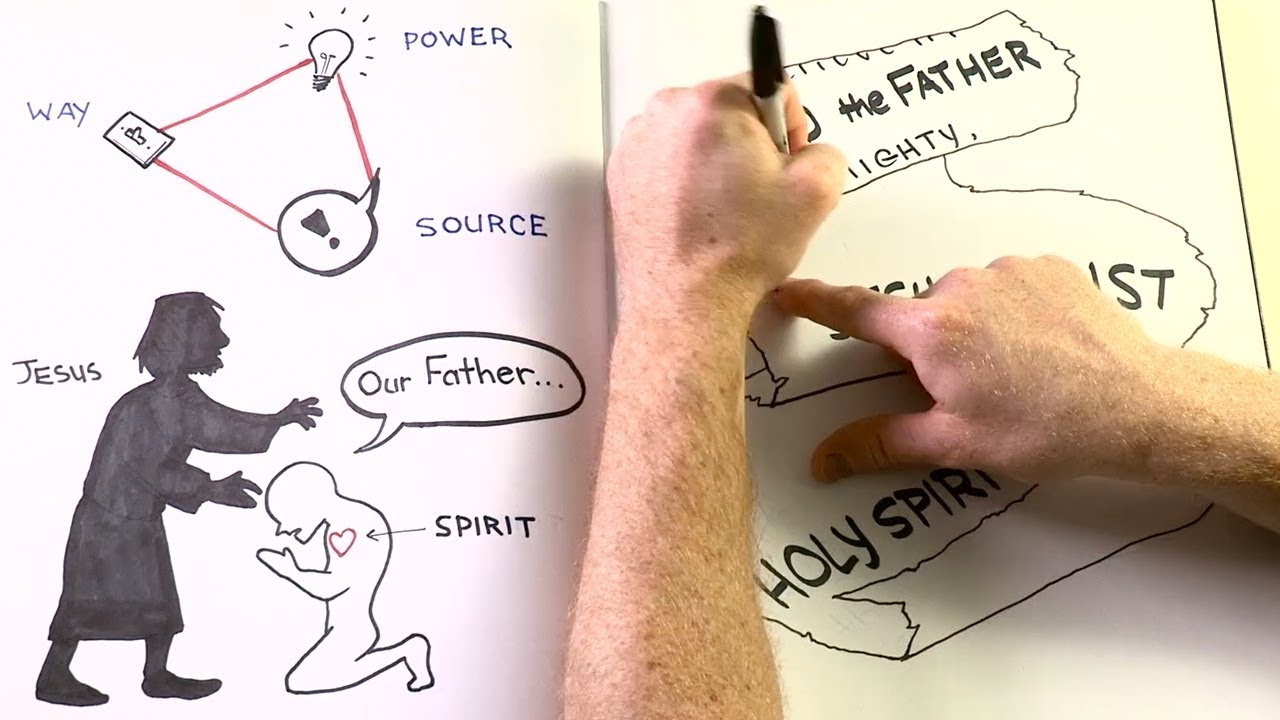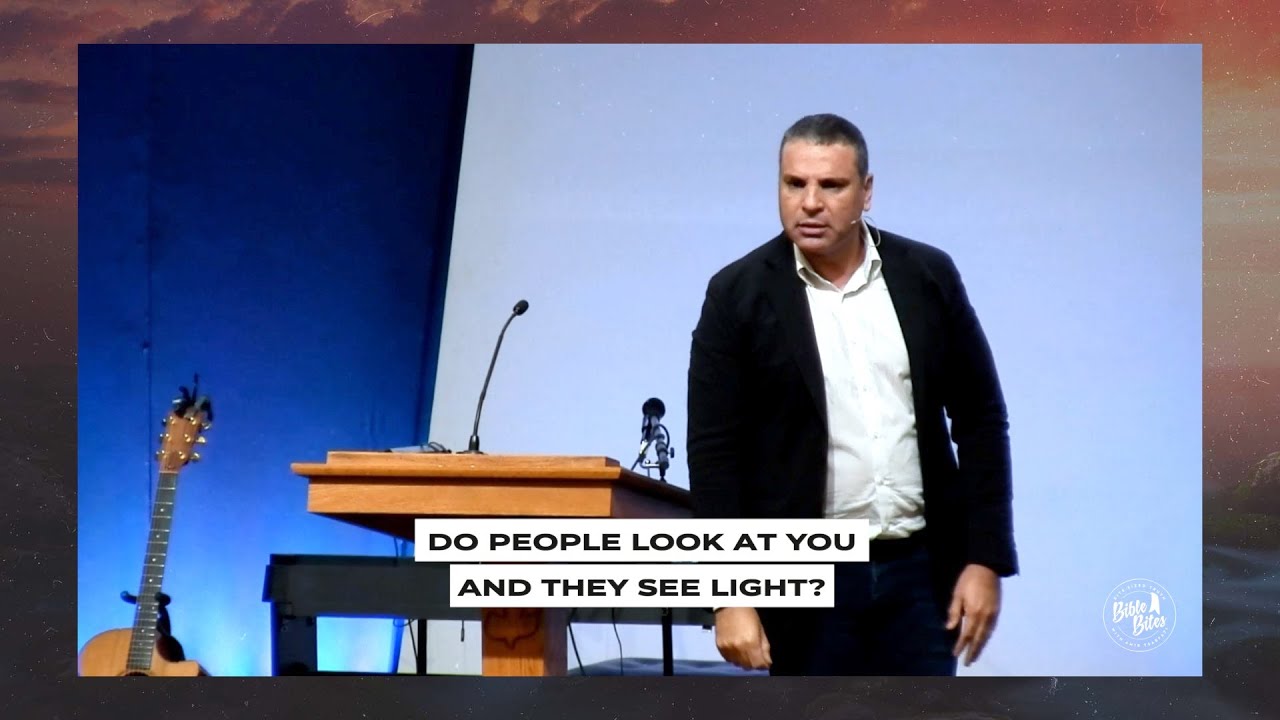The Disaster at Our Southern Border
The following is adapted from a speech delivered on July 22, 2021, at Hillsdale College’s Allan P. Kirby, Jr. Center for Constitutional Studies and Citizenship in Washington, D.C., as part of the AWC Family Foundation Lecture Series.
In just a few short months, the Biden administration has created a disaster on the southern border of the United States. It did so by methodically—and by all indications intentionally—undoing every meaningful border security measure that had been in place. As a result, we have had five straight months of over 170,000 illegal immigrants apprehended at the border. The number in June was the highest in over 20 years. And Immigration and Customs Enforcement (ICE) has been effectively shut down.
Our national discussion of border security is generally misleading, and it is designed to be misleading by those who favor open borders. They frame the issue as if the American people face a binary choice: either let all immigrants in because they are “looking for a better life” or close our borders completely and inhumanely. But this is a false choice. The unspoken alternative is to enforce the law, taking in immigrants who enter the U.S. legally while securing our borders against those who attempt to enter illegally—particularly those meaning to do us harm.
Illegal immigration is, of course, nothing new. It has been a problem in our country for many decades. What is relatively new is the total lack of concern we see in the Biden administration, especially in terms of the national security aspect of border control.
Unbelievable as it may seem to us today, it was only 15 years ago—with the 9/11 terrorist attacks still fresh in our minds—when Congress came together in a bipartisan effort to pass the Secure Fence Act of 2006. The Secure Fence Act directed the Department of Homeland Security to take appropriate actions to achieve “operational control” over U.S. land and maritime borders to “prevent unlawful entry.” It defined operational control as the prevention of all unlawful entries into the U.S., including terrorists, instruments of terrorism, narcotics, and other contraband. And it specifically set the goal of “provid[ing] at least two layers of reinforced fencing, installation of additional physical barriers, roads, lighting, cameras, and sensors.” It added thousands of Border Patrol personnel, mandated the acquisition of new technologies, and resulted in the construction of more than 650 miles of physical barrier along the southern border of the U.S. between 2006 and 2011.
To repeat, this legislation was passed in a bipartisan spirit, with 80 members of the U.S. Senate voting to approve it. This included Senator Barack Obama, who said in 2005: “We simply cannot allow people to pour into the United States undetected, undocumented, unchecked, and circumventing the line of people who are waiting patiently, diligently, and lawfully to become immigrants in this country.” It included Senator Chuck Schumer, who said in 2009: “Illegal immigration is wrong, plain and simple. . . . People who enter the United States without permission are illegal aliens and illegal aliens should not be treated the same as people who enter the U.S. legally.” And it included Senator Joe Biden, who said in 2006: “Let me tell you something, folks, people are driving across that border with tons, tons—hear me, tons—of everything from byproducts from methamphetamine to cocaine to heroin, and it’s all coming up through corrupt Mexico.”
Some attribute the breakdown of the bipartisan consensus on securing the border to the fact that Democrats came to look on illegal immigrants as much-needed Democrat voters. For whatever reason, a decade later these same Democratic leaders were lambasting President Trump’s border wall policy as “immoral and ineffective,” even “racist,” and fiercely opposing any and every serious proposal aimed at enforcing immigration law.
***
When I say that the Biden administration methodically undid every meaningful border security policy that it inherited, what specifically do I mean? I’ve mentioned the border wall. And it is a demonstrable fact that border walls, placed in strategic locations, act as effective impediments and improve the ability of law enforcement to drive and dictate the behavior of criminal organizations rather than being driven and dictated to themselves. One of the most ridiculous criticisms I’ve heard is that the wall is “a fourteenth century solution for a twenty-first century problem.” The same could be said of the wheel, which also still works pretty well.
In any case, the first bullet point of President Biden’s budget for the Department of Homeland Security this year trumpets the fact that not a cent will go towards the construction of border walls.
Yet despite the amount of intense debate the border wall engendered, it was not the only or even the most important border security measure instituted under the Trump administration. Let me outline two other key game changers.
Prior to Trump’s presidency, a combination of three things had the effect of forcing the Department of Homeland Security to institute a “catch and release” policy for illegal immigrants: the Trafficking Victims Protection Reauthorization Act of 2008, which mandated that the U.S. detain all unaccompanied minors from non-contiguous countries (countries other than Mexico and Canada); Deferred Action for Childhood Arrivals, an executive policy adopted in 2012 to allow some of the migrants brought into the country illegally as children to receive a renewable deferred action from deportation; and the Flores Settlement Agreement, a 1997 court decree that was reinterpreted in 2015 to prevent the U.S. from detaining migrant families and unaccompanied minors for more than 20 days. In addition to catch and release, these things combined to bring about a demographic shift in illegal immigration that was immediately exploited by smuggling organizations—a shift from the influx of predominantly single adult males from Mexico to an explosive influx of families and unaccompanied minors from far and wide, and particularly from Central America. By 2016, the message had been sent and received that America’s southern border was wide open.
In response to this, the Trump administration negotiated the Migrant Protection Protocol, a bilateral agreement with Mexico more commonly known as the Remain in Mexico Program. Under this agreement, people illegally entering or being smuggled into the U.S. with a minor would no longer be able to stay simply by asking for asylum. It was chiefly this Remain in Mexico Program that ended catch and release, removing the greatest incentive for people to try to enter the U.S. illegally.
Prior to the full implementation of the Remain in Mexico Program—at the height of the 2019 border crisis when Department of Homeland Security facilities were overwhelmed—the Flores Settlement Agreement had forced Border Patrol to release illegal alien families, often just hours after they were apprehended. In May of that year, Customs and Border Protection were apprehending over 5,000 illegals per day. After full implementation of Remain in Mexico, illegals who applied for asylum were returned to Mexico to await their hearings. This resulted in a dramatic reduction in the flow of illegal immigrants, especially of families and unaccompanied minors. By February 2020, we had seen a 75 percent reduction in families attempting to enter illegally. Many chose to return home—either on their own or with the assistance of the Mexican government—since catch and release was no longer in effect. It was a big victory for the rule of law.
The current out-of-control surge at the border stems chiefly from the fact that the Biden administration acted quickly to halt the Remain in Mexico Program and return to catch and release. In response to a lawsuit brought by the Texas Attorney General, a federal judge has recently ruled that Remain in Mexico must be reinstated, and the U.S. Supreme Court has refused to overturn that ruling. How this will play out remains to be seen.
Another game-changing development under the Trump administration was a series of Asylum Cooperative Agreements made between the U.S. and the Central American countries of Guatemala, Honduras, and El Salvador. These Asylum Cooperative Agreements codified accepted international practices governing asylum seekers, which encourage migrants to seek relief from the first safe country able to assist them. Migrants from these countries seeking asylum in the U.S. were traversing thousands of miles, across multiple countries, and our policies were encouraging that. The Agreements not only encouraged migrants to obtain immediate assistance closer to home, they also served as a deterrent to those with fraudulent claims.
Less than three weeks after President Biden took office, Secretary of State Antony Blinken announced that “in line with the President’s vision” the U.S. had suspended, and was in the process of terminating, the Asylum Cooperative Agreements with Guatemala, Honduras, and El Salvador. In the same announcement, Blinken said that the new U.S. approach to the problem of migration from these countries would be to address the “root causes” of that migration—especially economic underdevelopment and poverty, although, oddly enough, climate change has been mentioned as a root cause as well.
We are hearing more and more subsequently about root causes—especially from Vice President Harris, who President Biden charged with developing a “Root Causes Strategy.” But what we are hearing is bunk. The fact is that when the U.S. opens its borders—which is what it amounts to when we return to a catch and release policy—illegal immigrants flock to the U.S. That’s the root cause of the crisis on our southern border. Compare the numbers in April of last year to those of this April: there was a 900 percent increase in illegal immigration. The economic conditions in Central America didn’t markedly change during that period. The climate didn’t markedly change. Our policies changed! That’s the root cause.
There is a second important point to make in this regard. The basic legal premise of asylum is that the migrant must have a valid claim to be the victim of persecution in his or her home country due to race, religion, nationality, political affiliation, or membership in a protected class. Under current law, a desire to improve one’s economic status is not a valid asylum claim. If it were, the overwhelming majority of people in the world would have a valid claim to seek asylum here. Open borders advocates, including those in the Biden administration who harp on root causes, cultivate the myth that a desire for economic betterment is a valid reason by itself to seek asylum. That would require a radical change in U.S. law that I don’t think the American people would accept.
***
The incoming Biden team received exhaustive briefings on the situation at the border and was warned about the consequences of undoing the security policies they inherited. They were told clearly that Border Patrol stations didn’t have adequate capacity to handle the surge of illegal immigrants that would follow a reversal of policy; they were told clearly that the Department of Health and Human Services did not have the detention capacity to handle it. They were told that smuggling organizations and other criminal groups would exploit a return to catch and release.
Despite this, they rushed to dismantle the entire system. And with the results becoming evident to the public, they resorted to deception. I’ve served in federal law enforcement in various capacities for more than 35 years, under six different administrations. And while I’ve become numb to the spin and misdirection that is commonplace in Washington, I have never seen as blatant a disinformation campaign as this one.
Initially, this campaign involved outright denial: “Our message has been straightforward—the border is closed,” said Secretary of Homeland Security Alejandro Mayorkas on March 21, in the midst of a surge across the border of families and unaccompanied minors. There was also deflection: Mayorkas blamed the surge on the Trump administration, which he claimed had “torn down” the “entire [immigration] system” that had been in place. This took a lot of gall, given that the surge was so obviously a direct response to the termination of Trump’s Remain in Mexico Program and Asylum Cooperative Agreements and the revival of catch and release.
We were also treated to a fictitious narrative according to which the surge was the reflection of seasonal trends. A “significant increase” in migration “happens every year” in the winter months, President Biden claimed at his first presidential press conference, since that is when migrants “can travel with the least likelihood of dying on the way.” The problem is that this year’s winter numbers dwarfed those of 2020—not to mention the fact that the surge has continued unabated into the spring and summer. The June apprehension number exceeded 180,000, and in July it exceeded 210,000. Year-to-date apprehensions are over one million, including more than 100,000 unaccompanied minors—a 444 percent year-to-year increase.
At the point when the administration could no longer deny the dangerously overcrowded conditions at Border Patrol facilities, some operating at more than 400 percent capacity, it adopted a shell game strategy, first moving migrants into newly-constructed facilities and then surreptitiously flying families and unaccompanied minors to cities throughout the U.S. The point of this ongoing shell game is not to stem the flow of illegal immigrants into our country, but to improve the political “optics” of the crisis.
***
Make no mistake, criminal organizations—which are adept at exploiting weak and ambiguous U.S. immigration policies—are paying close attention to what’s happening and will adapt their tactics and procedures accordingly. The commonsense reality is that by incentivizing and facilitating illegal immigration, the Biden administration is making it easier for drugs to pour into the U.S., for human trafficking to expand, and for criminal aliens to infiltrate our society. Simply consider that between 40 and 50 percent of Border Patrol and other Customs and Border Protection enforcement resources have been pulled off the front lines to provide humanitarian aid, leaving large areas of the border unmonitored and unsecured.
It is estimated that the number of “got aways”—not the illegal immigrants being relocated around the country, but those who have successfully entered undetected—already surpasses 260,000, more than the population of the city of Arlington, Virginia. And we can safely assume that not all of them are good upstanding people.
In the past decade, the Border Patrol has apprehended tens of thousands of criminal aliens and gang members. It is estimated that just this year, the Border Patrol has apprehended 8,000 criminal aliens—including 46 murderers, 393 sex offenders, and 880 assailants. Over the July 4 weekend, it apprehended several members of MS-13, the most violent transnational gang operating in the U.S. It also recently apprehended two Yemeni nationals who were listed on the U.S. Terrorist Screening Database. In 2020, ICE made more than 100,000 arrests, with 90 percent of those arrested having a criminal conviction or pending criminal charges.
In addition to utilizing illegal immigration as a distraction technique, smuggling organizations often force migrants to carry drugs across the border as a means of payment. And they use their profits from human smuggling activities to finance increasingly more sophisticated drug smuggling techniques that involve tunnels, drones, ultra-light aircraft, and maritime operations. So far this year, Customs and Border Protection assets have participated in the seizure of more than 600,000 pounds of drugs. Fentanyl seizures have skyrocketed in 2021, with more than 6,000 pounds being seized by Border Patrol and Customs and Border Protection—a 300 percent increase over this time last year.
Let me end by saying something about what is bureaucratically called the 287(g) program—it is called that because it was established in Section 287(g) of the Immigration and Nationality Act in 1996. This is the program that makes it possible for local law enforcement to work with ICE in removing illegal criminal aliens. A majority of Americans oppose the idea of so-called sanctuary cities, which are disastrous in terms of public safety. What they might not realize is that every city is now threatened with becoming a sanctuary city. Why? Because the Biden administration has effectively shut down ICE. So today, for instance, a sheriff’s department can arrest a known gang member who is in the U.S. illegally for a non-violent felony such as burglary or drunk driving. But if that sheriff calls ICE, he will be told that is not a priority and that he should release the criminal gang member back into the community.
Thomas Feeley—until recently the director of ICE in New York State—resigned from ICE out of frustration that the Biden administration is, in his words, “doing everything [it] can to cripple [enforcement and removal operations].” In an interview following his resignation, Feeley related an incident where he was told to release an illegal immigrant who was a convicted arsonist. The rationale for releasing the illegal was that he hadn’t been arrested in the past ten years. He hadn’t been arrested, Feeley pointed out, because he had been in prison during that period. But that didn’t matter. He was released into the community anyway.
***
In conclusion, it is simply common sense to view border security as national security. If you make this point today, you risk being called a racist or worse. But it needs to be said over and over until we fight our way back to the point where we have a bipartisan consensus that immigration laws should be enforced. This is not going to be easy. Even as the acting commissioner of Customs and Border Protection, I had my official government Twitter account blocked prior to the 2020 election for posting a photograph of the border wall and explaining that it is an integral part of effective border security. The powers-that-be eventually reversed this decision, but it is an indication of what the American people—who overwhelmingly support border security—are up against.
What we need is widespread active public involvement. Illegal immigration, border security, the erosion of the rule of law, and the loss of our nation’s sovereignty are interconnected, and should be debated as important issues in local and state politics as well as national. When I was the chief of U.S. Border Patrol in the Obama administration, Secretary of Homeland Security Jeh Johnson told us that 1,000 illegal immigrants a day is a bad day. Today that number is approaching 7,000, and nothing is being done about it. This can’t be allowed to continue. A country that cannot control its borders is not a country, and I’m sad to say that we are facing that eventuality.
|
||||||||||||||||||||||||
|
||||||||||||||||||||||||
|
||||||||||||||||||||||||
Angels and Demons
https://youtu.be/ioXXkDKZkEw
What Does it Mean That We Are God’s Workmanship?
What Does it Mean That We Are God’s Workmanship?
The truth that Christ’s believers are God’s workmanship reflects His works of creation, redemption, provision, and sanctification in every believer’s life. This workmanship displays the greatness and the goodness of the loving Creator.
- Philip WijayaChristianity.com Contributing Writer
- 202120 Sep
Paul wrote to God’s holy people in Ephesus who were faithful followers of Christ Jesus, “For we are His workmanship, created in Christ Jesus for good works, which God prepared beforehand that we should walk in them” (Ephesians 2:10, NKJV).
Other English Bible translations use words such as “handiwork, masterpiece, accomplished, creative work, or the product of His hand” (heaven’s poetry etched on lives) instead of workmanship.
In the Oxford English Dictionary, workmanship is defined as “the degree of skill with which a product is made, or a job done” and synonymous with craftmanship, which is “the quality of design and work shown in something made by hand; creative skill or ability.”
The truth that Christ’s believers are God’s workmanship reflects His works of creation, redemption, provision, and sanctification in every believer’s life.
1. God’s Work of Creation in His Workmanship
All human beings are created in the image of God, regardless of whether or not they put their faith in His Son, Jesus Christ (Genesis 1:26-27). All we are the clay, and the Creator is our potter (Isaiah 64:8).
God created the universe by His word: He spoke, and things came into existence. But it was only when He created man that He did something different: “And the Lord God formed man of the dust of the ground, and breathed into his nostrils the breath of life; and man became a living being” (Genesis 2:7).
Therefore, unlike animals and plants, every human being possesses a spirit, which means having the ability to perceive spiritual realms or matters and the things of God, who is Spirit (John 4:24).
Man is the crown of God’s creation (Psalm 8:3-5) and created through God’s direct, intimate intervention (Psalm 139:13-16). Each of us is fearfully and wonderfully made, displaying the intricate, excellent, and marvelous work of God. Therefore, the life of every human being is precious, purposeful, and meaningful in the sight of the Creator.
2. God’s Work of Redemption in His Workmanship
Because of sin, originated by the enemy (i.e., the fallen angel or Satan), God’s image in every human being is corrupted. As a result, “all have sinned and fall short of the glory of God” (Romans 3:23).
This means that we are all sinners, by nature and by choice, and no amount of good works can save us from the penalty for sin: “For the wages of sin is death, but the gift of God is eternal life in Christ Jesus our Lord” (Romans 6:23).
We all need God’s mercy and grace for our salvation. We all need God taking the initiative to restore the relationship — and thankfully, He did! (by sending His Son, Jesus Christ) — so that we can have peace with God.
Therefore, since we have been justified through faith, we have peace with God through our Lord Jesus Christ, through whom we have gained access by faith into this grace in which we now stand. And we boast in the hope of the glory of God (Romans 5:1-2).
This redemptive and restorative mission has been fulfilled by Jesus Christ, who came to seek and to save the lost (Luke 19:10). Here is the wonderful truth: God’s image in every believer is restored by Jesus Christ, the perfect, visible image (i.e., the exact representation) of the invisible God (Colossians 1:15, 2 Corinthians 4:4, Romans 8:29), as we live in Him, and He lives in us.
3. God’s Work of Provision in His Workmanship
Everyone who trusts in Jesus can be sure that God is able to supply all our needs according to the riches of His glory in Christ Jesus (Philippians 4:19).
As King David declared, “The Lord is my shepherd; I shall not want. He makes me to lie down in green pastures. He leads me beside the still waters. He restores my soul; He leads me in the paths of righteousness for His name’s sake” (Psalm 23:1-3).
It is for His name’s sake that God provides all our needs. We can trust Him, the Possessor of heaven and earth, for our every need, including physical, financial, emotional, and spiritual needs.
Note that we are “God’s workmanship, created in Christ Jesus,” having been blessed, not only with eternal life but also with a new life (2 Corinthians 5:17) and abundant life (John 10:10) in Him. Praise the Lord!
4. God’s Work of Sanctification in His Workmanship
As we receive and believe Jesus Christ, the Holy Spirit resides in us, making our hearts His home (Romans 8:9). By the Holy Spirit alone, we can realize that Jesus is Lord (1 Corinthians 12:3). The Holy Spirit convicts us of our sin, of our need for God’s righteousness, and of His judgment (John 16:8), and He guides us into all truth (John 16:13).
We live in a broken world and oftentimes our faith in Christ is challenged by the temptation and values of this world. Hence, we need God’s Spirit to continue to sanctify us from the sins of this world that could “pollute” our hearts.
And as we are God’s workmanship, the Holy Spirit ultimately transforms us into Christlikeness (2 Corinthians 3:18), producing the character of Christ and the fruit of the Spirit in us (Ephesians 5:8-10; Galatians 5:22-23). This means that our sinful nature (i.e., tendency to disobey and rebel against God) is replaced with a new, godly nature that desires to please, obey, and glorify the Lord.
The Purpose of God’s Workmanship
It is amazing to see that the triune God (God the Father, the Son, and the Holy Spirit) all participate in this workmanship, which displays His divine nature — His greatness and goodness.
And now, Ephesians 2:10 tells us further that we are God’s workmanship for good works, which He ordained beforehand that we should walk in them.
The preceding verses say, “For by grace you have been saved through faith, and that not of yourselves; it is the gift of God, not of works, lest anyone should boast” (Ephesians 2:8-9, NKJV). It is clear that we are saved by God’s grace through faith that should be manifested in good works.
In other words, God’s grace in our lives through Christ Jesus should result in good works, which, I believe, speak of our unique calling and purpose in Him. These are related to God’s original plan in creating mankind (Genesis 2:28), which is then translated into the Great Commission.
Then Jesus came to them and said, “All authority in heaven and on earth has been given to me. Therefore go and make disciples of all nations, baptizing them in the name of the Father and of the Son and of the Holy Spirit, and teaching them to obey everything I have commanded you. And surely I am with you always, to the very end of the age” (Matthew 28:18-20).
These good works ultimately bring honor and glory to the One who creates, redeems, provides, and sanctifies us with His unchanging love. All glory to God!
For further reading:
What Is the Difference Between Grace and Mercy?
What Does It Mean to Have Peace with God?
How Are We Created in the Image of God?
How Did Different Races Come into Existence as God’s Wonderful Created Image?
What Does “Imago Dei” Mean? The Image of God in the Bible
Photo Credit: ©iStock/Getty Images Plus/dorian2013
Philip Wijaya, Ph.D. currently lives in Vancouver, Canada with his wife, Sandra, and their daughter, Shalom. His interest in science and faith in God has motivated him to actively write in his personal blog (philipwijaya.com), in addition to his professional research work in the area of clean energy and chemical engineering. In his leisure time, he enjoys sports, football games, music, and traveling with family.
Behold Israel
|
||||||||||||||||||||||||||||
|
||||||||||||||||||||||||||||
|
||||||||||||||||||||||||||||
|
|
||||||||||||||||||||||||||||
|



























